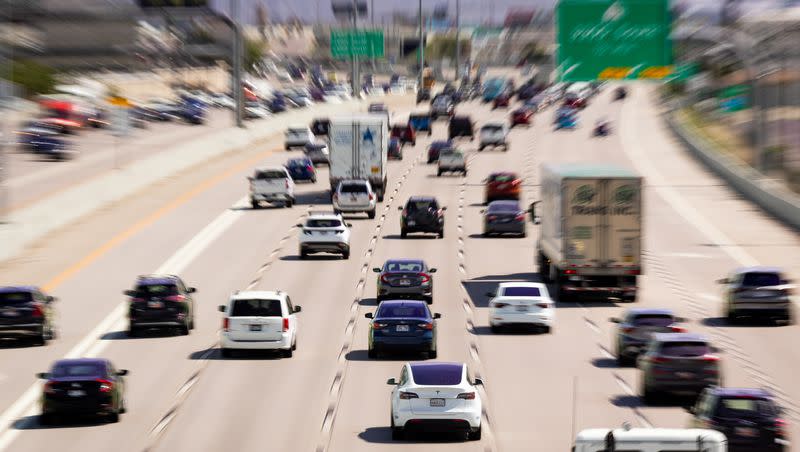Opinion: Are Utah drivers really as bad as people say?

Ever noticed how people in most every state tend to think their state has the worst drivers anywhere? There always seems to be a study backing up everyone’s opinion, too. For instance, you may have heard about the 2022 QuoteWizard analysis that said Utahns are the worst drivers in the U.S.
That analysis draws from the rate of incidents in insurance quote data in each state, which includes car accidents, DUIs, speeding tickets and other citations.
What people may not realize, however, is that what it takes to get a speeding ticket, other citation or DUI varies wildly across the country. That means it’s hard to know what to make of it.
What happens if we lay aside these more ambiguous figures, and zero in on traffic fatalities as a proxy for driving skill?
The numbers tell a very different story.
Going deeper
The Fatality Analysis Reporting system (FARS) was created by the National Highway Traffic Safety Administration to provide an overall measure of highway safety, and thereby help in “detailing the factors behind traffic fatalities on our roads.”
That database is really the best barometer for such estimations, acting as a “nationwide census providing Congress and the American public yearly data regarding fatal injuries suffered in motor vehicle traffic crashes.”
From our review of the latest numbers available in 2021 in the Fatality Analysis Reporting system, it turns out that in terms of traffic deaths per 100,000 population, Utah is the 14th safest state.
In terms of pedestrian/vehicular deaths, per capita, Utah is the 11th safest. And in terms of deaths per vehicle miles traveled, Utah is the eighth safest state.
Of the 31 states that reported enough blood alcohol content rates to be able to derive reliable estimates, Utah also has the fourth lowest proportion of fatalities where drivers had a blood alcohol content at or above .08.
Related
Utah takes the top spot for the country’s worst drivers, according to new report
Opinion: Do you battle the worst drivers in America each day? You probably live in Utah
This is consistent with a 2023 analysis just released by Forbes Advisor likewise looking more deeply at six key metrics. That review showed Utah ranked 38th in terms of “worst drivers.”
Also vindicated in this more complete analysis were Hawaii, ranked 37; California, ranked 42; and Ohio, ranked 43 — all of which made it in the “top 10 worst” in the same QuoteWizard analysis that portrayed Utah as worst of the worst.
Needs improvement
All is not well on Zion’s roads, of course. For instance, in terms of observed seatbelt use, Utah is worse than average (No. 35). And the latest numbers from the Utah Highway Safety Office found a total of 55,299 collisions and 320 car fatality deaths in 2022 — a measurable drop from 61,406 collisions and 332 deaths the previous year, but still the highest they have been in two decades. (Until recent years, Utah hadn’t topped 300 deaths since 2003.)
As previously reported, some of the state trends mirror national trends, with Advocates for Highway and Auto Safety noting an increase in U.S. traffic deaths to a 16-year high of almost 43,000 people in 2021 — with further increases in 2022 as well.
Deaths on Utah roads last year took 12 younger children, 33 teens and 275 adults (243 males and 77 females) — including 202 motorists, 53 pedestrians, 50 motorcyclists, and 15 bicycles. Eighty-seven collisions were caused by speed and 140 by intoxication.
States with higher DUI rates tended to also have high rates of other driving incidents, and the QuoteWizard analysis did find Utah at a surprising eighth in frequency of DUIs. It’s worth trying to understand the paradox of that number in an otherwise sober state.
How exactly to square the data about Utah being ranked first in speeding and fifth in accidents with its overall stereotype of cautious driving is another mystery I’d love to solve. Gov. Spencer Cox’s proposed statewide trails network will likely help with some of this.
Protecting the most vulnerable
Among other things, these latest Utah statistics reflect an increase in pedestrian and child mortality. UDOT spokesman John Gleason said his “startling takeaway” from last year’s numbers was “how many of our most vulnerable road users’ lives were lost.”
“Everyone shares the road, whether they’re driving, walking, or riding a bike or motorcycle, and all road users have an equal responsibility to watch out for one another.”
Gleason finds the rise of motorcycle, bicycle and pedestrian deaths to be the most alarming, calling the figures for all three the highest in “recent memory.”
Our own recent analysis confirmed as well that Utah has the seventh highest number of deaths per fatal car crash (possibly because of larger families).
This is all clearly sobering, as is the case any time an innocent life is lost on our roads. But taking stock of how to improve requires seeing matters clearly, and neither overstating nor understating a problem in any particular location.
In that spirit, however much people like to gripe about how overly cautious Utah drivers are, that caution appears to have its benefits.
Stephen Cranney is a nonresident fellow at Baylor University’s Institute for the Studies of Religion and teaches at Catholic University of America. Jacob Hess is the former editor of Public Square Magazine and writes at Publish Peace on Substack.

